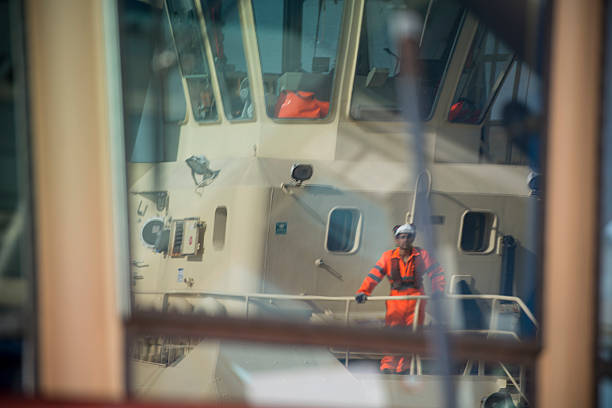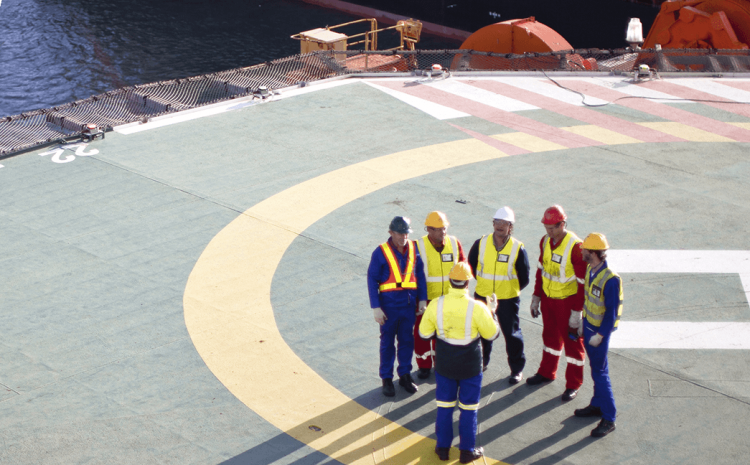Safety is critical to sustainability and improved commercial success
It is time to adopt a safety-first strategy again if seafarers are to feel valued and cared for.
Safety is the single most important subject for any shipping company. Getting our programmes right is imperative to future success. It goes beyond managing incidents; it is fundamental to everything we do. It’s about putting people, the employees that are the lifeblood of our companies, at the very centre of shipping and motivating them to do their very best every day.
However, despite its importance, safety appears to have moved down the agenda in the shipping industry. The impact is of major concern, with data showing us that the overall number of incidents and fatalities is at a high level. The Safety & Ship- ping Review 2022 from Allianz Global Corporate & Specialty revealed there were 3,000 reported ship- ping casualties or incidents last year, which is an increase of over 10% when compared with 2020.

Worse still is that many of the leading incidents, such as machinery damage, collisions and fires, are largely preventable. The State of Maritime Safety 2020 report by IHS Markit concluded that “multiple risks can be tackled with a focus on crew training and emergency responses, and investment in technology for tracking and monitoring vessels”.
With container-carrying capacity almost doubled over the last decade and crew shortages worsened by the current geopolitical conflict, there are even higher risks for ships and the seafarers who operate them. There is a need for a new approach focusing on our people — and one that does not rely only on regulation for guidance.
The most important aspect of safety is protecting the lives of seafarers. This requires stronger collaboration and data sharing among industry members. The Seafarers International Research Centre at Cardiff University noted that under-reporting of injuries appears to be a problem of increasing, rather than diminishing, magnitude. Classification issues, such as likely suicides being reported as “suspicious” deaths, are just one example of inaccurate data impacting the quality of safety pro- grammes.
Behind the data are the lives of the people that work for us. Both they and their families and children, entrust us with their care and we are accountable. We need to look after our seafarers as if they were our own family.
An accident can cost a company dearly, both directly and indirectly. Insurance may cover some of the burdens, but the company will incur losses from delays, loss of revenue, compensation costs, management time and more. Accidents can also damage the image of the company, employee well-being, and the reputation of the leadership team.
Strategic drivers
Three years ago, a new approach was developed by establishing an industry coalition called Together in Safety. The coalition comprises all of the shipping industry groups and many of the world’s major shipping companies, as well as insurance, classification societies, and country representatives. The principal objective is to protect seafarers’ lives.
A key building block is the “framework of strategic drivers”, which underlines how Together in Safety members are tackling safety issues. There are key strategic drivers:
- Leadership: Visible safety leadership must stem from the top down, with the right behaviours and mindset modelled by the chief executive and management team.
- Incident Prevention: Together in Safety has identified 14 categories of major incident types involving casualties or high-cost insurance claims. Proven best practices have been identified allowing companies to address those major incident types.
- Well-being and Care: Ensuring well-being and showing care is key to developing a healthy, happy and high-performing team.
- Collaboration: Industry groups and shipping companies are combining collective knowledge and expertise for the benefit of the wider industry. Collaboration will provide reliable and accurate incident data, and develop solutions to deliver improved performance.
Safety is key to shipping’s future success. Implementing these strategies will require passion, dedication and motivation to put seafarers at the very centre of the shipping industry. Our employees are the new customer of the future; they must feel valued and cared for.
Originally published in TradeWinds, June 2022

Grahaeme Henderson
Together in Safety Chairman

